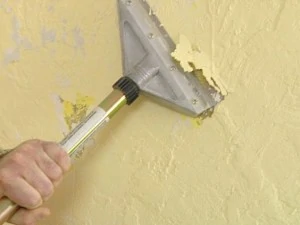Maintaining the rich color and smooth finish of your interior walls doesn’t mean you need to repaint the entire room to fix the cracks, holes, 
You can touch up the selected spots of your home’s interior wall paint just by using the proper technique as well as the right color. You can follow these techniques to keep your walls looking flawless and fresh for years.
Clean the Surface:
Before you undertake any repair tasks, you need to clean the wall with a soft cloth, mild detergent, and water. Actually, over the days, dirt, grease, and dust can build up on the wall’s surface and this can affect paint adhesion when you begin touching it up. You can get rid of this by lightly wiping the area with a soapy sponge and then by drying it with a clean piece of cloth.
Make Repairs:
Before you apply paint on the wall, you should make all repairs. For example, dents, small holes, cracks, scratches etc can easily be filled with spackling compound. You need to use fine-grit sandpaper and then gently smooth the surface around the area to be repaired. This is something that can help to remove any abnormalities or damages of the wall.
Prime the Wall:
Once all repairing tasks are done, you should prime the repaired areas for optimal paint adhesion as well as color blending. If you don’t use primer, the touched-up area on the wall will stand out from the rest of the painted surface. However, in order to get the best result, you need to use high quality, interior latex primer. Also, it is important to use a small or medium sized paintbrush to apply the layer of primer over the right spot. You need to allow the primer to dry properly, as recommended by the manufacturer’s directions.
Use the Same Paint:
The most important thing is to match the color you use the touch-up paint with the existing wall color. Although it is difficult to match the color exactly if the touch-up paint is not from the same can, so it is important to store the leftover paint wherever possible. This is something that will help you get the best result and will also help the touched-up area blend with the surrounding surface. Also, you need to use the same tool for the touch-ups. For example, if you used a roller, user roller again, and if you used a brush, use a brush again.
